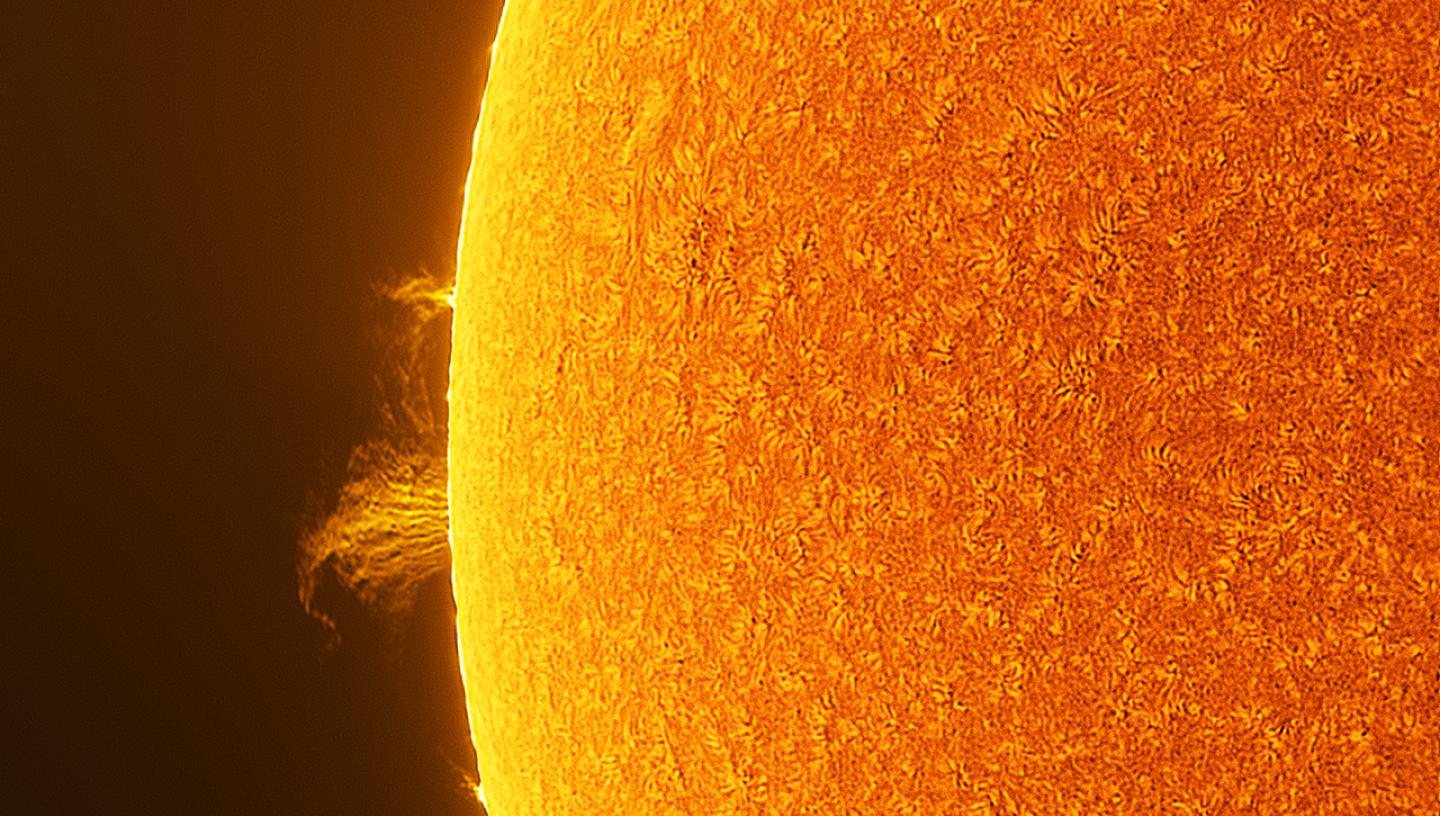
Essential Information
| Type | Talks and tours |
|---|---|
| Location | |
| Date and Times | Monday 10 June 2024 | Doors at 6.30pm, event starts at 7.15pm |
| Prices | Free | Flamsteed Astronomy Society Members only |
Space Weather is the weather of our space environment - solar-driven storms of radiation and magnetic fields that bombard our planet.
This natural laboratory around the Earth allows us to explore dynamic physical processes of space weather and its effects are a threat to the operation of multiple electronic and electrical systems such as satellites and even our power grid.
Since the days of Sputnik, artificial satellites and spacecraft have always carried radio transmitters and these radio signals provide a ‘free’ radio resource to sense our environment.
Professor Cathryn Mitchell was attracted to take up a career in space weather research because she was interested in the new field of radio tomography – the combination of multiple radio observations received from satellites to create ‘pictures’ or images of the space environment around Earth.
These ionosphere images reveal the mysterious, usually hidden world, all around us in the regions where our atmosphere meets space. They can help to explain long-distance radio propagation – why we can communicate with amateur radio today and yet we could not do so yesterday. They can tell us when and why our satnav signal is disrupted or less accurate. When we make the images into movies, they can show us how our planet reacts to the constant buffering from the Sun through the solar wind and from solar storms.
The talk will introduce space weather, show the threats that are posed to our modern technology and discuss what is being done to protect us from the threat from a major solar storm.
About the speaker
Professor Cathryn Mitchell at the University of Bath holds a Royal Society Industry Fellowship on the future of navigation systems with Spirent Communications. In 2009/2010 Prof. Mitchell was the lead scientific investigator on a large fieldwork expedition with the British Antarctic Survey in Antarctica, which included building and setting up radio equipment at Rothera, Halley, and remote deep field work at the Shackleton Mountains and at the US South Pole station. She was the recipient of the IoP Appleton Medal (2019) and the RAS Chapman Medal (2020), in recognition of her investigations of outstanding merit in the science of the Sun, space and planetary environments or solar-terrestrial physics.
Header image: Solar Storms by Kush Chandaria shortlisted for Astronomy Photographer of the Year 2022